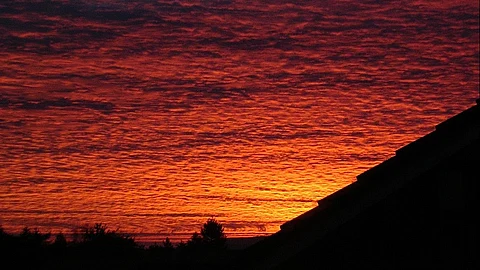

It never rains, but it pours. You can count on it.
Predicting weather? Not so much. And this year weather forecasts are literally, all over the map, heading into summer and how it will shape up for fires and drought.
Some, like Environment Canada, are predicting a hot dry summer that could translate into another season of devastating wildfires while the admittedly anedotal Farmer’s Almanac suggest it may be cool and damp, offering relief for drought-stricken farmers.
“Much of the country will see near-average precipitation, but British Columbia and parts of Alberta will be drier than normal, which could lend itself to widespread wildfire activity,” it said in its latest forecast on Friday.
On the Prairies, “May will be warmer than normal, with precipitation less than normal in the east and greater than normal in the west. Summer will be cooler and wetter than normal, with the hottest periods in mid- to late June, late July, and late August.”
Adding to the complexity is the current state of global climate patterns — and the accuracy of climate models, ranging from satellites to Old Wives’ tales.
The satellites are at a disadvantage because North America is in the midst of an ‘ENSO-neutral’ phase — meaning neither El Niño nor La Niña is active — making long-term forecasting especially challenging.
Meanwhile, early-season blazes in the already forcing evacuations across Alberta and fire danger levels surging across much of the Prairies and British Columbia.
The recent spike in wildfires — over 11,700 hectares have already burned this spring — comes amid record heat and exceptionally dry conditions across large swaths of Western Canada. Athabasca County declared a local state of emergency this week, and areas from central Alberta to interior BC are facing “extreme” to “high” fire danger ratings.
Compounding the concern is a deepening drought across much of the region.
According to Environment and Climate Change Canada (ECCC), many locations north of the Trans-Canada Highway have received less than 40% of normal precipitation since April 1. These conditions not only increase the likelihood of fires but also strain already struggling farmers, who depend on spring moisture to sustain crops through the summer growing season.
According to a forecaster, June is typically the wettest month across parts of BC and southern Alberta, which will set the tone for the rest of the summer.
While some regions may benefit from an unsettled and wetter pattern in the coming weeks, others are expected to remain dry and hot. Temperatures in southern Saskatchewan and Manitoba are forecast to climb into above 30C this weekend.
The conflicting forecasts are further muddied by diverging predictions between scientific institutions and more anecdotal sources like the Old Farmer’s Almanac.
Yet the accuracy of these competing forecasts is difficult to gauge. The Farmer’s Almanac, based on decades-old “proprietary” formulas involving solar activity and lunar cycles — and which direction the crow flies — lacks scientific validation but retains a strong cultural following.
In contrast, ECCC uses modern climate models and 30-year historical averages, but even these can falter in ENSO-neutral years when weather patterns are erratic.
What is certain is that even a brief heatwave after a wet spell can quickly dry out surface fuels and reignite fire risks.
Officials are urging caution and preparation.
“We urge people to refrain from any open burning during this elevated fire danger period,” the BC Wildfire Service stated. “Conditions are changing rapidly.”
